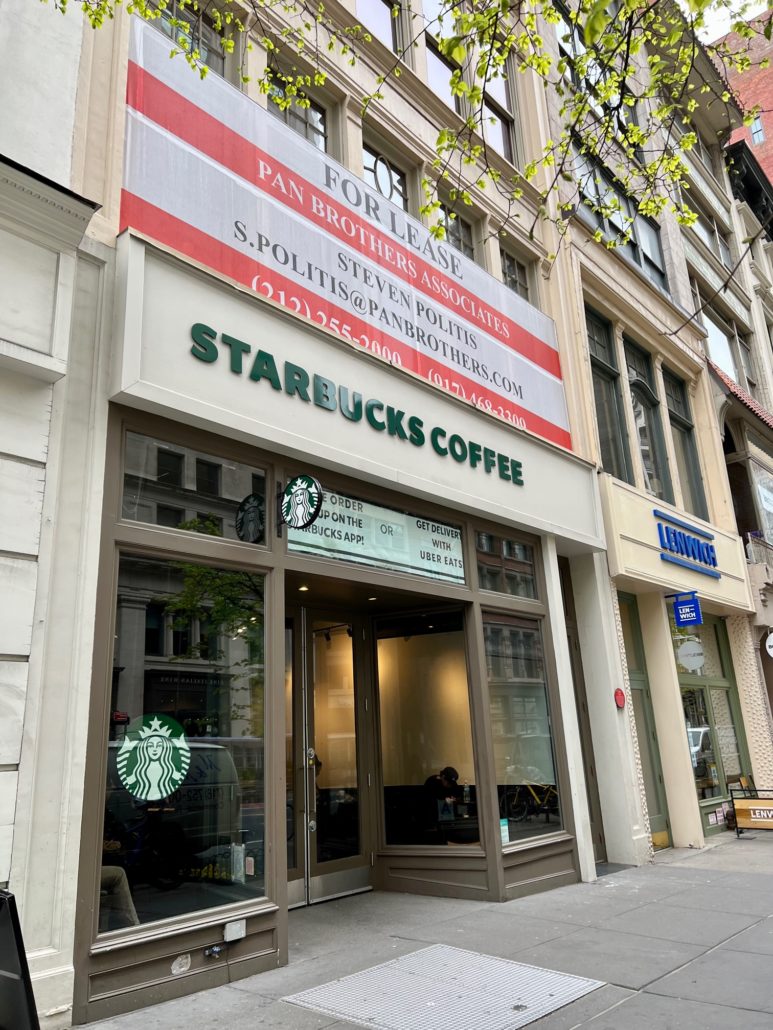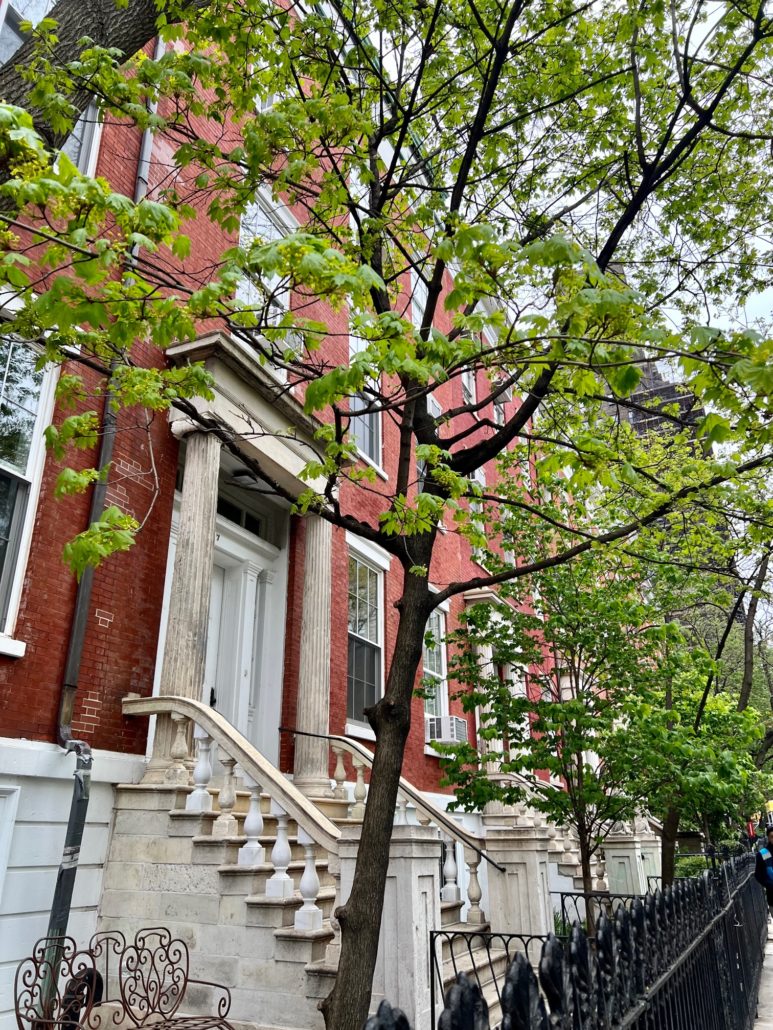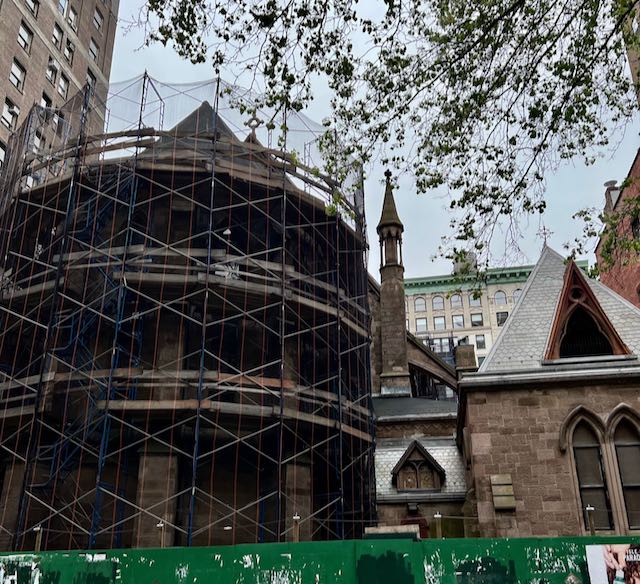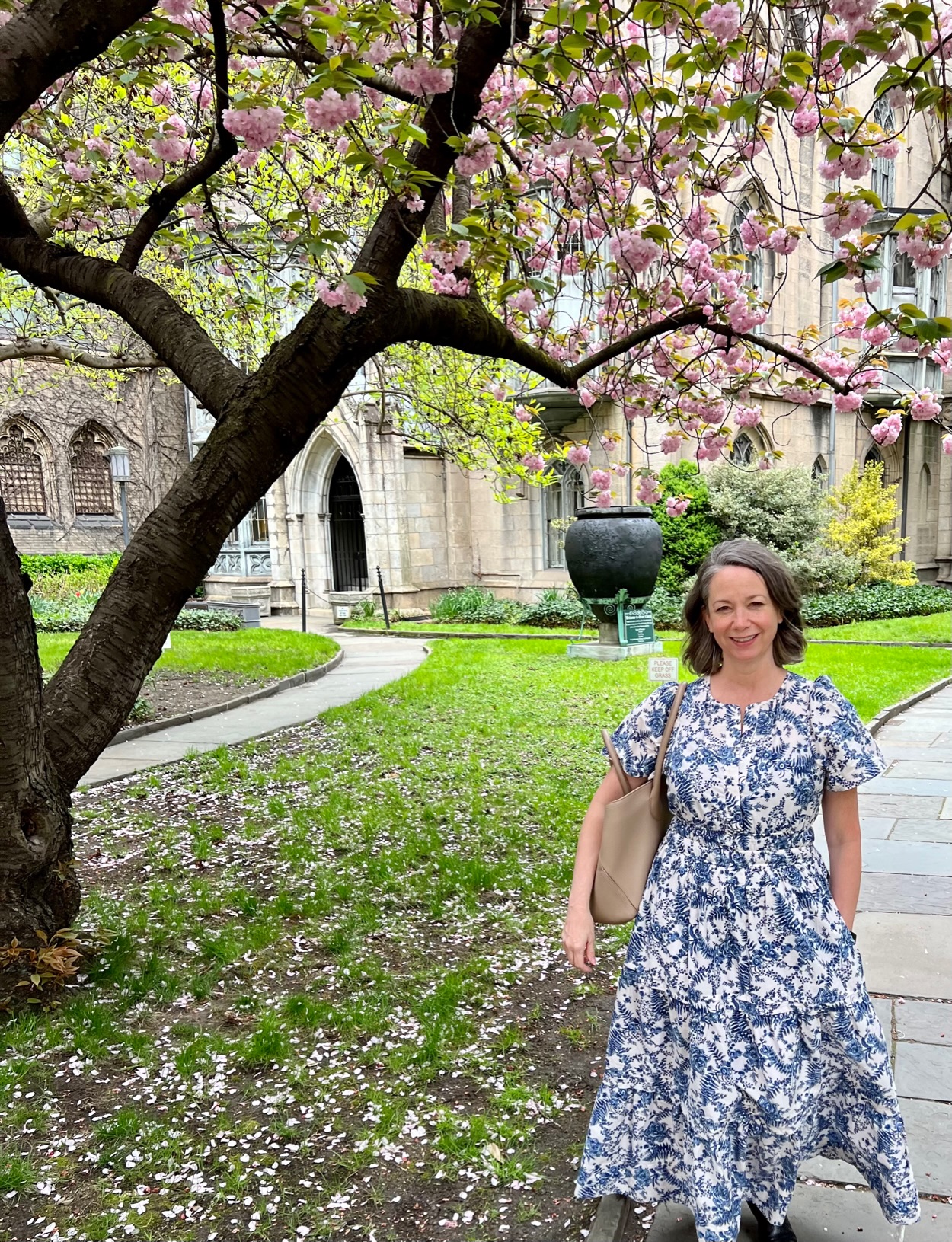In the months before our April trip to New York City, we watched the HBO series The Gilded Age, and I listened to the companion podcast, hosted by one of the NYC historians on the Bowery Boys podcast, which I’ve subscribed to for years. I love the stories of “Old New York,” when Central Park was far to the north and the city we know today was growing its roots and limbs. The HBO series reminded me that the Bowery Boys offer themed walking tours, one of which focused on my favorite source of Old New York info: Edith Wharton.
Wharton’s The Age of Innocence and The House of Mirth are two of my favorite novels of all time (and the movies made of them are true to the books and really, really good). And New York City, where they are set, is one of my favorite places to be. But when I went to book the Bowery Boys’ walking tour, no times were on offer during our visit. Google came to the rescue, as we were able to put our own tour together from the information we found just hanging out free, online, with its bare face hanging out.
We combined our Wharton walk with my husband’s treasure hunt of writers’ homes in Greenwich Village, which is easy to do if you are looking for more sites to ogle and admire. I followed along on those and cooperatively took photos, but I was there for the Wharton sites most of all.

We started at Grace Church on Broadway and 10th Street in Greenwich Village. It was closed when we stopped in on our way to meet friends, but was open when we passed back that way. Grace is an Episcopalian church that has existed in some form since 1808 and was located here in 1834. In French Gothic Revival style, the Renwick-designed masterpiece is now a National Historic Landmark because of its architectural and historical significance in New York City. Even if you’re not a Whartonophile, as I am, you couldn’t spend your city time better than stopping in here for a moment or two of quiet contemplation. It is a gorgeous setting, and if you’re interested in religious art and/or architecture, you could spend hours. If you’re there in April, as we were, the cherry trees in the church yard will sport pretty pink blooms. Two of my NYC friends say they frequent this church as a place to soothe their souls.
It was of interest to me specifically because of the Whartonia: First, Edith Newbold Jones (later Wharton) was baptized here on Easter Sunday, April 20, 1862. She was married in a different church, but she had two of her characters’ being wed here when she wrote that Newland Archer and May Welland married at Grace Church in The Age of Innocence.

The site of Wharton’s childhood home is now a Starbucks, but you can gaze at the red plaque and get a coffee (or a pretty floral ceramic coffee go-cup, as I did, in honor of avid gardener and garden designer Edith) at 14 West 23rd Street, across from Eataly in the Flat Iron neighborhood.

Back downtown at 7 Washington Square Park North, a row of Greek Revival townhomes includes a home Edith rented with her mother in the 1880s after the death of her father, and they are the original houses. This neighborhood was being flocked to by the rich who wanted to live more spaciously along the park in the growing city. It’s a good stop on your Wharton Walk as you can take a bit of time to enjoy the park, too, which can be lively with the Greenwich Villagers and NYU students mixing.
A final walk-by site for us was the church where Edith Jones made her ill-fated marriage to Edward “Teddy” Wharton on April 29, 1885, when she was 23 and he was 12 years older than she. At the time, it was Trinity Chapel. Today it is the Serbian Orthodox Church of Saint Sava, which I would have really liked to stop into as well for its own self in addition to the Wharton history, but it was gutted by fire in 2016 and is still enscaffolded and not open for visitors. It looks dark and lovely from the outside, so it’s on my list to keep checking in on until I can get inside, even if it will be very different from Wharton’s experience of the church in the 1880s.

The walking tour evoked the conflicting emotions in me such experiences often do, the awe and gratitude at being somewhere someone who’s meant a lot to me has been and the frustration of not being able to be any closer than I am, distanced by time and, in this case, an evolving culture that would make New York City not completely recognizable to Wharton herself. Oh, the avenues and street grid and the major architectural landmarks like the park, the arch and the churches are still there, and probably many of the houses too, but beyond the Starbucks in place of her childhood home, New York society was changing beyond what Wharton recognized in her lifetime. Her novels are often about an age that is lost and while the nostalgia is palpable, she also “leaned in” to some of those changes, getting divorced from her mentally ill husband and making a very, very successful living for herself as a writer, when many women in the Old New York she harkens back to would be hard pressed to do the same. But her books are even more about the constraints of this moneyed community, in which individual needs and longings are sacrificed on the altar of social norms, which can at times be likened to the “hard bright blindness” at the heart of May Welland in The Age of Innocence.
I am no Edith Wharton, but as a woman author, whose novel deals with some of the same themes as Wharton’s, I couldn’t help feel like I was not walking in her footsteps per se, but walking on, forward, making a path I could never have hoped to tread if she had not gone so insightfully, bravely and beautifully before. It was a pleasure to honor her by finding a morning to step back in time and see New York not only as it may have been when she lived, but also beyond that to her memories, past the scrim of time and change.

